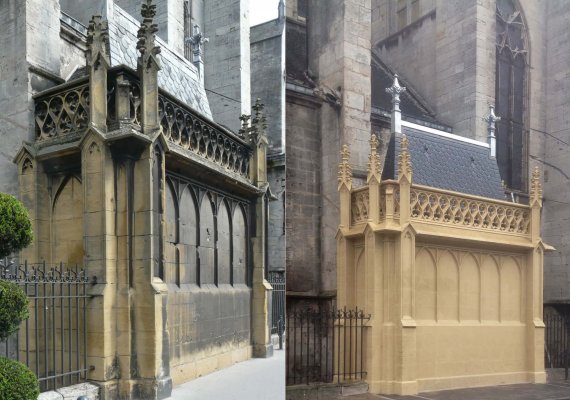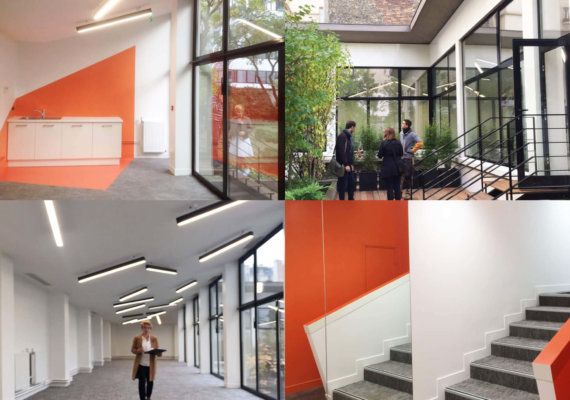While all depreciation methods yield the same result, the timing of recognition varies. The sum of Years’ Digits is recommended when quick depreciation recognition is required. This method suits assets like cars, computers, and phones that rapidly become obsolete due to technological advancements.
- At Finance Strategists, we partner with financial experts to ensure the accuracy of our financial content.
- Wajiha is a Brampton-based CPA, CGA, and Controller with 17+ years of experience in the financial services industry.
- The straight-line Depreciation expense is the same each year, because there are no residual values involved.
- Each number is then divided by this sum to derive the percentage depreciation for each year.
The tech company deduced that computers and phones have a useful life of 4 years, after which they will be worth $75,000. Consider an arbitrary example of tech company ABC purchasing equipment for a new department floor. They put in a buy order for several computers and office phones, which amounted to $500,000. To find the SYD function on Excel, one must navigate to the formulas tab and click on the Financials drop-down menu where it can be seen. Alternatively, the syntax of the function can be typed into an empty cell.
Sum of the years digits: A depreciation guide
The table below includes all the built-in Excel depreciation methods included in Excel 365, along with the formula for calculating units-of-production depreciation. Sum of the Years Digits is an accelerated depreciation method, meaning more depreciation is expensed in the early years of the class life of an asset. To calculate depreciation using this method, take the estimated life of the asset and add the years together. Sum-of-the-years’ digits is a method that uses an arbitrary arithmetic system to derive the annual depreciation charges. Also known as the “sum of years method,” this model rapidly reduces an asset’s value. It permits larger deductions in the asset’s early years and smaller deductions in later years, emphasizing the asset’s economic utility rather than time of use.
- It records a larger depreciation in the earlier years of the asset’s useful life.
- Depreciation charges for the first two years of the asset are $45,000 and $30,000 respectively (refer the solution of the example above in case of confusion).
- This asset is expected to have a useful life of 5 years at which time it will be sold for $10,000.
- This has the effect of making profits higher than they would be if they were calculated using the more traditional approach of straight-line Depreciation.
- You can access the two accompanying videos here and here and a workbook with examples of using the various depreciation methods.
The distribution of depreciation expenses through an asset’s useful life is best described using the SYD approach instead of straight-line depreciation. When looking at the function’s syntax, it can be seen how the Per component changes for each year, leading to different depreciation expenses. This is similar to the changes undergone by the depreciation factor when using the SYD formula. This approach requires straight-line Depreciation rates and an asset’s useful life (which is the time period over which it will be used/depreciated). Finally, this method requires management to determine the appropriate Depreciation rate. The sum-of-the-years’ digits method is another variation on accelerated depreciation.
Depreciation calculations determine the portion of an asset’s cost that can be deducted in a given year. Or, it may be larger in earlier years and decline annually over the life of the asset. Deskera Books is an online accounting software that your business can use to automate the process of journal entry creation and save time. The double-entry record will be auto-populated for each sale and purchase business transaction in debit and credit terms. Their values will automatically flow to respective financial reports.You can have access to Deskera’s ready-made Profit and Loss Statement, Balance Sheet, and other financial reports in an instant. There will be 5 entries at the end of each year where the company debits the depreciation expense and credits the accumulated depreciation account.
However, there is also an Excel function named SYD which fulfills the same method. Sum of Years Digits is a useful depreciation method for assets that have a short useful life and go obsolete before reaching their salvage value. It comprises of the purchase price of the fixed asset and the other costs incurred to put the asset into working condition. These costs include freight and transportation, installation cost, commission, insurance, etc. Thus, the method is based on the assumption that more amount of depreciation should be charged in early years of the asset.
Disadvantages of Sum of the Years’ Digits Depreciation
Therefore, companies adopt various approaches in order to overcome such a challenge. Firstly, the amount of depreciation charged for the last year is adjusted. This is done to make salvage value equal to the anticipated salvage value. Secondly, many companies choose to use straight line depreciation method in the last year to adjust the over depreciated salvage value. This straightforward approach evenly distributes depreciation across an asset’s useful life. The formula deducts salvage value from the asset cost and divides it by the asset’s lifespan.
This formula is best for small businesses seeking a simple method of depreciation. Those three arguments are the only ones used by the SLN function, which calculates straight-line depreciation. Depreciation expenses are recorded for accounting purposes and its calculation is, therefore, important to a business. Depreciation is carried out for tangible assets which are the physical assets. A company acquires these assets to increase productivity and raise the overall performance of the business. Intangible assets are amortized which is a concept similar to depreciation but the type of assets differ in both cases.
Accelerated depreciation is also appropriate for assets that have higher repair expenses in later years. Depreciation is calculated under sum-of-the-years’ digits by adding up the number of years in an asset’s useful economic life. Wajiha is a Brampton-based CPA, CGA, and Controller with 17+ years of experience in the financial services industry.
Sum of Years Digits (SYD) Formula
For instance, a company might use SYD for technology-related assets as advancements are regularly introduced in the field, causing previous versions of a technological asset to become obsolete quickly. Someone on our team will connect you with a financial professional in our network holding the correct designation and expertise. At Finance Strategists, we partner with financial experts to ensure the accuracy of our financial content. For example, suppose that a company purchases equipment on 1 October of the current year. The exception is that the calculations needed in sum-of-the-years’ digits are slightly more complex. The application process isn’t complicated, but to apply for an LLC, you’ll have to do some homework first.
How confident are you in your long term financial plan?
A major benefit of using this method is that it considers the fact that the asset performance will decline over the years; i.e. the asset is more productive in the early years. Therefore, it is only apt to charge a higher depreciation in the early years and decrease it in later years. This depicts the changing economic usefulness of the asset for that time. As with similar depreciation methods, in the last year we ignore the formula and depreciate only to the salvage value of the asset. This method is similar to double declining depreciation for fixed assets. Still, it differs from straight-line depreciation, where the amount deducted is the same for each year of an asset’s useful life.
Everything You Need To Master Excel Modeling
The fifth argument, factor, is optional and determines by what factor to multiply the rate of depreciation. If it is left blank, Excel will assume the factor is 2 — the straight-line depreciation rate times two, which is double-declining-balance depreciation. Sum of the years’ digits depreciation method involves calculating depreciation based on the sum of the number of years in an asset’s useful life. Many companies calculate their depreciation expense using an accounting method called accelerated depreciation. In this depreciation scenario, an asset, such as a piece of equipment, has its book value reduced on the balance sheet at a faster rate than a traditional straight-line depreciation method. Companies use a few different methods for achieving this, such as the Sum of Years’ Digits (SYD) method.
An asset’s productivity is highest in its early years and gradually decreases over time. This approach results in higher depreciation charges during the initial years. This method calculates depreciation based on the asset’s production output rather than time-based usage. Depreciation is an accounting method that companies use to apportion the cost of capital investments with long lives, such as real estate and machinery. Depreciation reduces the value of these assets on a company’s balance sheet.
An older deteriorated asset demands more repairs and maintenance charges. Therefore, a decreasing depreciation charge will help balance the cost of maintenance of why profits don’t equal cash flow the asset. In conclusion, it can be said that the SYD depreciation method is beneficial in allocating the cost of holding onto an asset over its useful life.






